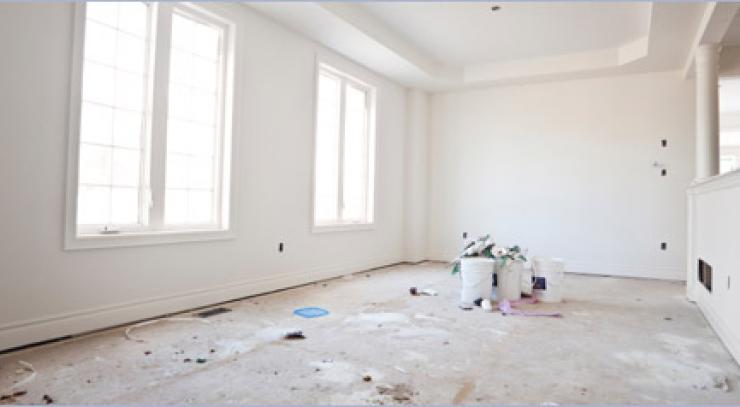Preserving the captivating allure of Venetian plaster requires diligent restoration and ongoing maintenance. This article delves into the essential practices involved in safeguarding the timeless elegance of polished plaster surfaces. By understanding the process of restoration and implementing effective maintenance routines, you can ensure the longevity and enduring beauty of this exquisite decorative technique.
Assessing the Condition: A Foundation for Restoration
Visual Inspection: Unveiling the Hidden Signs
A thorough visual assessment of the Venetian plaster surface unveils subtle cues of damage, wear, or deterioration. By keenly observing the plaster's texture, colour, and any visible cracks or blemishes, you can gain insights into the restoration needs and plan accordingly.
Understanding the Underlying Causes
To address restoration effectively, it is crucial to identify and comprehend the underlying causes of the plaster issues. This includes assessing factors such as moisture intrusion, structural movements, or previous inadequate repairs. By addressing these root causes, you lay the groundwork for a successful restoration process.
Restoring Damaged or Aged Venetian Plaster: A Labor of Artistry
Surface Preparation: The Canvas for Restoration
Before commencing restoration work, proper surface preparation is essential. This involves cleaning the surface, removing loose debris, and ensuring a stable foundation for the restoration materials. Thorough surface preparation sets the stage for seamless integration between the restored and existing polished plaster.
Repair Techniques: Masterful Artistry at Work
Restoring cracks, chips, or missing sections in polished plaster requires a delicate touch and skilled craftsmanship. Artisans employ specialised techniques to recreate the original texture, match colours, and blend the repaired areas seamlessly. This meticulous attention to detail ensures the restoration work remains indistinguishable from the surrounding plaster.
Cleaning and Maintenance Practices: Nurturing the Timeless Beauty
Gentle Care: The Key to Longevity
Regular cleaning routines are vital to preserve the elegance of Venetian plaster. Using gentle techniques and non-abrasive tools, remove dust and dirt from the surface without compromising its integrity. Gentle care ensures that the plaster's lustre and exquisite finish endure for years to come.
Choosing the Right Cleaning Agents and Tools
Selecting appropriate cleaning agents and tools is crucial in maintaining the Venetian plaster's pristine appearance. Consult professionals or follow manufacturer guidelines to identify compatible products that effectively cleanse the surface without causing damage. Employ soft brushes, microfiber cloths, or gentle vacuum attachments to remove debris effectively.
Addressing Stains and Blemishes: Restoring Radiance
Understanding Stain Types and Their Origins
Polished plaster is not impervious to stains. Identifying the type of stain and its source is essential in determining the appropriate restoration approach. Common culprits include food and beverage spills, ink, or watermarks. Understanding the nature of the stain helps tailor the restoration technique for optimal results.
Targeted Stain Removal: A Delicate Balance
Removing stains from polished plaster requires a delicate balance between effectiveness and preservation. Employ gentle stain removal methods, such as using mild detergents, poultices, or carefully applied solvents. Test any cleaning agents on a discreet area to ensure compatibility before applying them to the stained surface.
Protective Coatings and Maintenance Tips: Longevity Preserved
Preserving with Protective Coatings
Applying protective coatings and sealants acts as a shield, safeguarding from potential damage. Consider using breathable sealants that allow the plaster to retain its natural characteristics while offering protection against moisture, stains, and UV radiation. Proper application techniques ensure even distribution and a seamless integration with the plaster surface.
Routine Maintenance: A Commitment to Beauty
Regular maintenance is key to preserving the timeless elegance. Establish a routine that includes gentle cleaning, inspections for signs of wear or damage, and prompt addressing of any issues that arise. By staying proactive and attending to maintenance needs promptly, you can prevent minor concerns from escalating into major restoration projects.
Expert Consultation: When Restoration Demands Artisanal Expertise
Recognizing the Need for Professional Assistance
Complex restoration projects or extensive damage may necessitate the involvement of experienced artisans or professionals. Recognize when the expertise of a specialist is required to ensure the highest quality of restoration work. They possess the skills, knowledge, and resources to tackle intricate challenges and deliver exceptional results.
Collaborating for Desired Outcomes
When engaging professionals, effective collaboration is crucial. Clearly communicate your goals and expectations for the restoration process. Provide any relevant historical or architectural context to guide the restoration work. Open and transparent communication between you and the experts ensures the project aligns with your vision while respecting the integrity of the Venetian plaster.
Restoring and maintaining Venetian plaster surfaces requires meticulous attention, artistry, and a commitment to preserving their timeless elegance. By assessing the condition, employing restoration techniques with finesse, implementing proper cleaning and maintenance practices, and seeking professional assistance when needed, you can ensure that the allure of polished plaster endures for generations to come. Embrace the responsibility of preserving this exquisite decorative art form and relish in the captivating beauty it bestows upon your spaces.



























